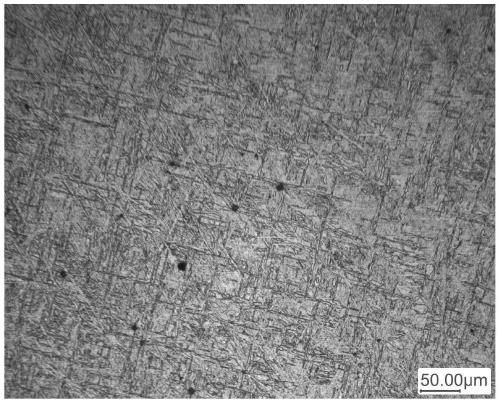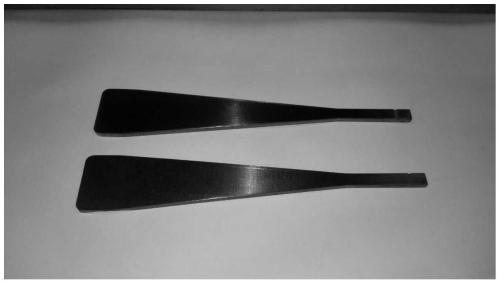Standard sample preparation method of residual stress deflection method calibration device
A technology for calibrating devices and residual stress, which is applied in the preparation of test samples, measuring devices, sampling, etc., and can solve problems such as deflection methods
- Summary
- Abstract
- Description
- Claims
- Application Information
AI Technical Summary
Problems solved by technology
Method used
Image
Examples
preparation example Construction
[0024] The invention provides a method for preparing a standard sample of a residual stress deflection method calibration device, comprising the following steps:
[0025] (1) Using raw material powders consistent with the composition of the product to be tested, mixing the raw material powders in a vacuum, and then sequentially performing pressing and sintering treatments to obtain a blank block;
[0026] (2) machining the blank block to obtain a constant beam blank of a certain size;
[0027] (3) Electrolyzing the equal-strength beam blank to obtain an equal-strength beam sample;
[0028] (4) heat-treat the equal-strength beam sample and then cool it down, and repeat the steps of heat-treatment and cooling to obtain a standard sample for the calibration device of the residual stress-deflection method.
[0029] The invention adopts the raw material powder with the same composition as the product to be tested, mixes the raw material powder in a vacuum, and then carries out pre...
Embodiment 1
[0040] In terms of mass percentage, 90% titanium oxide powder, 6% vanadium aluminum powder, and 4% aluminum powder are vacuum dry mixed in a vacuum furnace filled with protective argon gas at a vacuum degree of 0.01Pa, and mixed evenly to obtain a mixture. The particle size of the mixed material is 200 μm; the mixed material is subjected to vacuum compression molding at a molding pressure of 300 MPa, and vacuum sintered at a temperature of 1200 ° C for 4 hours, and then cooled with the furnace temperature to obtain a TC4 alloy sintered body.
[0041] The obtained sintered body is machined, and an electrolytic machining allowance of 0.8mm is reserved on each side, and the length L is obtained after electrolytic machining. 0 =185mm, thickness H=4mm, maximum width B≤38mm TC4 alloy and other strong beam samples, in which the electrolyte is NaNO with a mass concentration of 15% 3 Aqueous solution, power-on time 60s, voltage 20V, electrode feed speed 0.9...
Embodiment 2
[0045] GH4169 superalloy
[0046] The alloy powder was prepared by using the GH4169 master alloy, and the alloy powder whose size was mainly concentrated in 100-300 μm and the average particle size was 190 μm was obtained. In a vacuum furnace with a vacuum degree of 0.01Pa and filled with protective argon gas, the alloy powder is vacuum pressed and molded, the molding pressure is 350MPa, and vacuum sintered at a temperature of 1000°C for 4 hours, and then cooled with the furnace temperature to obtain a GH4169 alloy sintered body .
[0047] The obtained sintered body is machined, and an electrolytic machining allowance of 0.8mm is reserved on each side, and the length L is obtained after electrolytic machining. 0 = 185mm, thickness H = 4mm, maximum width B ≤ 38mm powder GH4169 alloy and other strong beam samples, in which the electrolyte is NaCl aqueous solution with a mass concentration of 12%, the electrification time is 70s, the voltage is 18V, and the electrode feed speed ...
PUM
| Property | Measurement | Unit |
|---|---|---|
| Granularity | aaaaa | aaaaa |
| Length | aaaaa | aaaaa |
Abstract
Description
Claims
Application Information
 Login to View More
Login to View More - R&D
- Intellectual Property
- Life Sciences
- Materials
- Tech Scout
- Unparalleled Data Quality
- Higher Quality Content
- 60% Fewer Hallucinations
Browse by: Latest US Patents, China's latest patents, Technical Efficacy Thesaurus, Application Domain, Technology Topic, Popular Technical Reports.
© 2025 PatSnap. All rights reserved.Legal|Privacy policy|Modern Slavery Act Transparency Statement|Sitemap|About US| Contact US: help@patsnap.com



